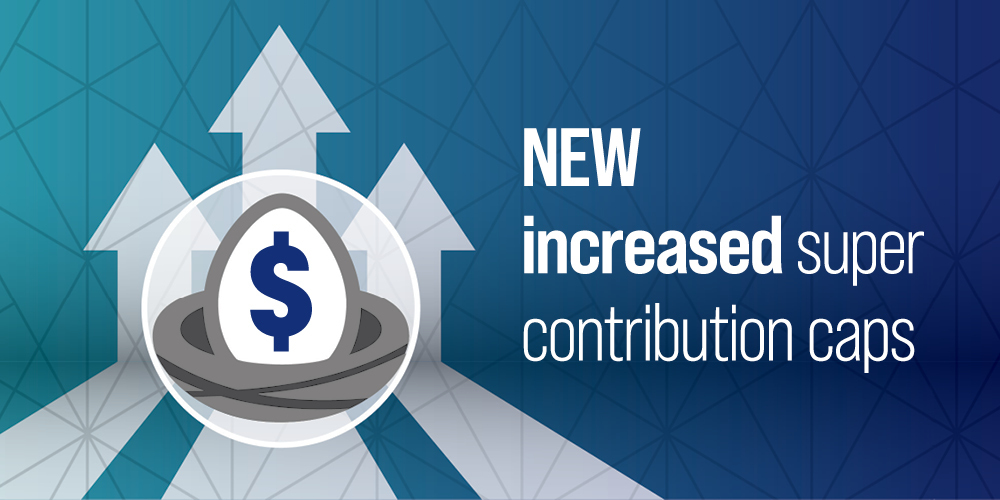
Federal Budget 24-25
What does the Federal Budget mean for me?
Treasurer Jim Chalmers has high hopes that his 2024 Federal Budget will rein in inflation earlier than expected, ease cost-of-living pressures and build a stronger economy in the future.
It’s a Budget for the here and now, he says, but also for the decades to come.
More than $8.4 billion has been allocated to quick-fix cost-of-living adjustments along with the previously announced Stage 3 tax cuts and the waiving of $3 billion in student debt.
With a federal election due next year, the Federal Government has announced spending of almost $83 billion on housing, infrastructure, health and a Future Made in Australia project to build a more resilient economy for the future.
The big picture
While Treasury is forecasting a $9.3 billion surplus for 2023-24 after the previous year’s $22.1 billion surplus, the books will look considerably different the following year with a $28.3 billion forecast deficit expected.
That’s against a backdrop of an uncertain global economic outlook with wars in the Middle East and Ukraine as well as slowing growth in China and elsewhere.
“Most advanced economies recorded subdued outcomes during 2023, with around a third of OECD nations recording a technical recession,” notes Treasury in the Budget papers.
“Global inflation has moderated but remains too high, and there are risks it will persist. Tackling inflation remains the primary focus but, as inflationary pressures abate and labour markets soften, the global policy focus will increasingly shift to managing risks to growth.”
There are some bright spots for Australia though.
Treasury is forecasting inflation could return to the target rate of between 2 and 3 per cent earlier, perhaps by the end of the year, the Treasurer says.
Jobs growth is stronger here than in any major advanced economy and real wages are growing again for the first time in almost three years.
Cost of living
This year’s Budget aims to help out those struggling to pay the bills with a range of tax cuts and subsidies.
Every taxpayer will pay less tax as part of the Stage 3 tax cuts announced earlier this year. The average tax cut is $36 a week or an annual $1,888.
More than 10 million households will receive a total rebate of $300 on their electricity bills and eligible businesses will receive $325.
The government says its Energy Bill Relief Plan has kept electricity price increases to two per cent through the year to the March quarter this year. Without it, prices would have increased by 14.9 per cent.
While it won’t provide immediate relief, the government has grocery prices in its sights. It’s taking steps to make a Food and Grocery Code mandatory with penalties up to 10 per cent of turnover for major breaches. It also directed the Australian Competition and Consumer Commission to investigate pricing and competition in the supermarket sector.
Commonwealth Rent Assistance has been increased by a further 10 per cent, there is a $138 million boost to emergency relief funding and financial support services, and the freeze on the deeming rate for income support recipients has been extended. The deeming rates are used by Centrelink to predict earnings from super and investments over the 12 months ahead. The lower deeming rate will remain at 0.25 per cent and the upper rate will remain at 2.25 per cent until 30 June 2025.
Anyone with a student debt will welcome a change to the indexation rate for the Higher Education Loan Program (HELP). The government says it will cut $3 billion in student debt for more than three million Australians.
Health
Medicines can be a big cost for many people and a new $3 billion agreement with community pharmacies is expected to help. The government is expecting the deal to deliver cheaper medicines and better patient health.
There will be a one-year freeze on the maximum patient co-payment and a five-year freeze for pensioners and other concession cardholders. This change means that no pensioner or concession card holder will pay more than $7.70 (plus any applicable manufacturer premiums) for up to five years.
Almost half of Australians live with a chronic health condition and the Budget provides more than $141 million for research and services for conditions including bowel and skin cancer, diabetes and dementia.
The government is also providing an extra $411 million to the Medical Research Fund to continue research for low-survival cancers.
And, in a strengthened mental health package, the government has committed more than $888 million over eight years to improve access to services and support.
Aged care
Providing further support for the recommendations of the Royal Commission into Aged Care Quality and Safety, the Budget allocates $2.2 million to develop a new Aged Care Act. The Act is expected to establish a new Support at Home program and improve the standard of in-home aged care.
An extra 24,100 Home Care Packages will also be made available to reduce waiting times and wait times for the My Aged Care Contact Centre will be reduced.
Meanwhile, the government has allocated funding to beef up the regulatory capabilities of the Aged Care Quality and Safety Commission.
To support fair wages for care workers, the government has committed to fund a further increase in the award wage for direct and indirect aged care workers. The government is also providing $87.2 million for initiatives to attract nurses and other workers into aged care.
Housing
With housing affordability affecting millions of Australians, the government has allocated $6.2 billion in the Budget on a range of initiatives.
There’s a further $1 billion for states and territories to deliver new housing, more student accommodation, an increase in funds for homelessness services and more concessional loans for community housing providers.
The Build to Rent market will receive a boost with a plan to allow foreign investors to purchase developments with a lower foreign investment fee.
The government is also supporting 20,000 new fee-free TAFE places for courses in the construction sector.
Infrastructure
The government aims to stimulate the economies of the states and territories with funding for a number of major infrastructure projects.
There’s $21.6 billion for Queensland over 10 years for projects including the Sunshine Coast rail line and Bruce Highway works; $20.8 billion over 10 years for NSW for various road upgrades; $19.2 million in Victoria for the North East Link and other projects.
Attracting investment
Aiming to shore up Australia’s economic fortunes, the government has created a comprehensive package of projects to lift our manufacturing industry and position us to take advantage of net zero.
The Treasurer says the world’s commitment to net zero by 2050 will demand “the biggest transformation in the global economy since the industrial revolution”.
He believes Australia’s energy, resources, regions, researchers and workers can all play a part in creating a “renewable energy superpower”.
To that end, the Budget includes $13.7 billion in production tax incentives for green hydrogen and processed critical minerals, $1.7 billion to develop new industries using green metals and low carbon fuels and $566 million to map the geological potential of the entire country to get a better picture of our critical minerals and groundwater.
There will be major work on attracting new investment by reforming investment settings and regulatory processes.
The government says it will make it simpler to invest in Australia to entice more capital both from overseas and at home. It will work with business, governments, unions, communities and other experts during 2024 to come up with the best approach.
Supporting women and families
With escalating rates of family violence and an alarming increase in the incidence of violence against women, the Budget includes funding to support a range of programs.
More than $925 million will be spent over five years to provide support for victim survivors leaving a violent intimate partner relationship and a program to strengthen accountability for systemic gender-based violence in higher education.
The government will invest more than $56 million over four years to improve access to sexual and reproductive healthcare for women including training GPs to provide better menopause care.
A newly released national gender equality strategy will drive government action on women’s safety, sharing, economic equality, health, leadership and representation.
In a move to take the pressure off parents, superannuation will be paid on government funded Paid Parental Leave (PPL) for parents of babies born or adopted on or after 1 July 2025.
Looking ahead
The stimulus provided by this Budget will bring some relief in the short term, but our economy will be relying on the big ideas, such as the Future Made in Australia project, to provide the resilience we need in an uncertain global economy.
Treasury is forecasting slow global growth and only 1.75 per cent growth in Australia this financial year and 2 per cent next year along with a significant deficit.
But the Treasurer is confident he has delivered “an inflation-fighting and future-making Budget” with “responsible relief that eases pressure on people and directly reduces inflation”.
It’s one that will “forge a new economy and a new generation of prosperity”, he says.
If you have any questions about the Budget measures announced, please don’t hesitate to contact us.
Information in this article has been sourced from the Budget Speech 2024-25 and Federal Budget Support documents.
It is important to note that the policies outlined in this article are yet to be passed as legislation and therefore may be subject to change.























